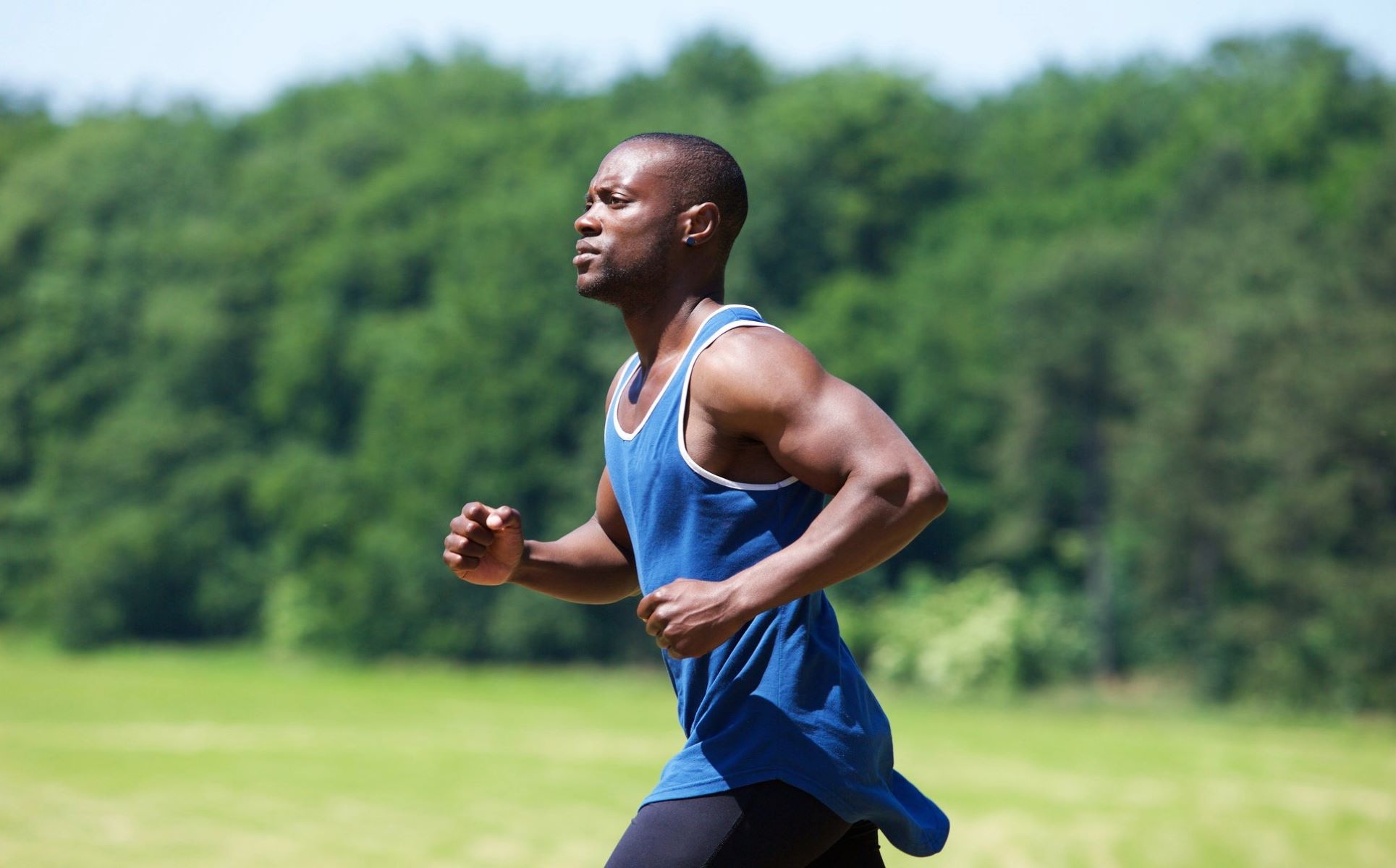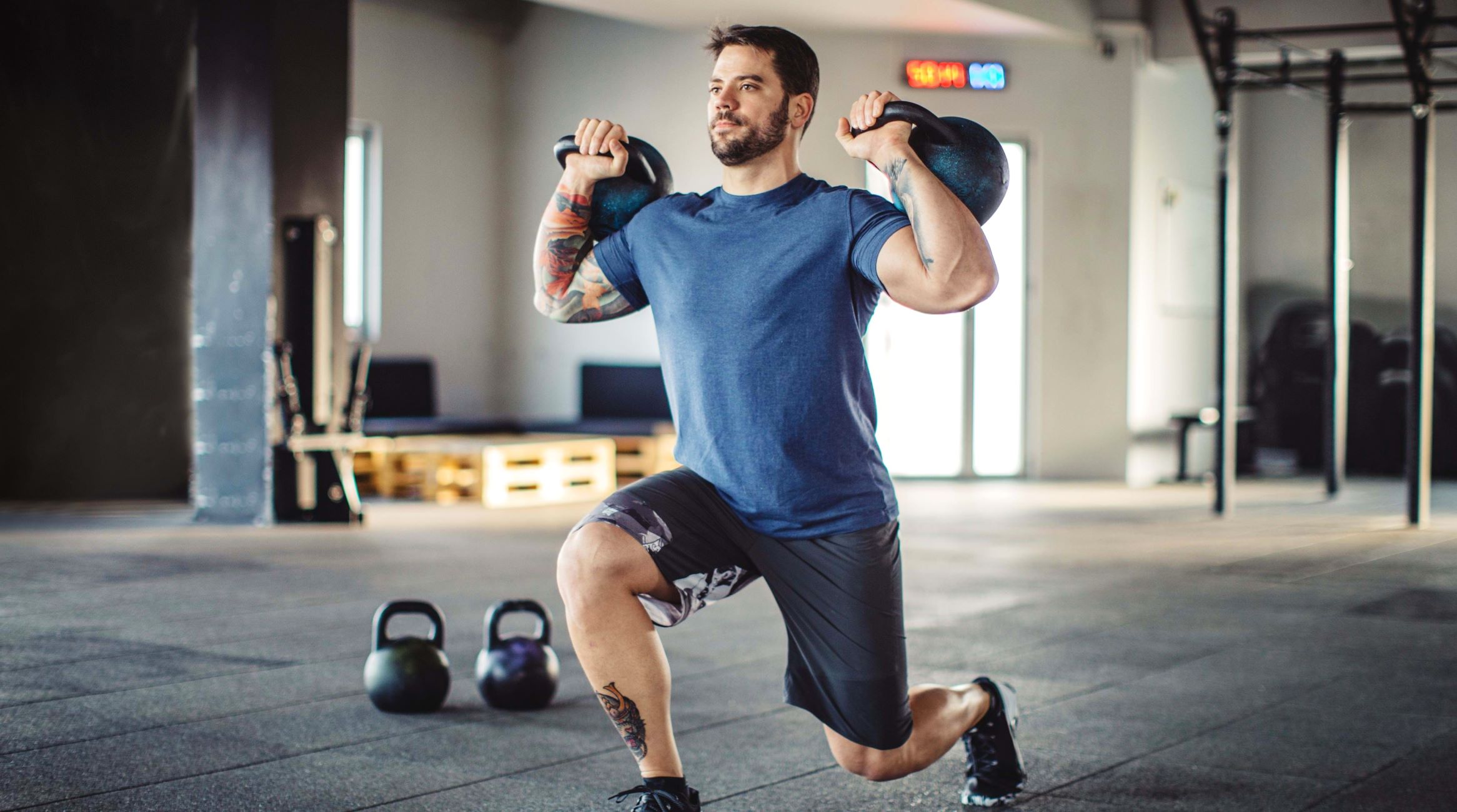Home>Training & Techniques>Cross-Training>Can Cycling Sessions Effectively Substitute Running?


Cross-Training
Can Cycling Sessions Effectively Substitute Running?
Published: February 20, 2024
Discover the benefits of cross-training with cycling sessions as a substitute for running. Enhance your fitness and performance with this effective alternative.
(Many of the links in this article redirect to a specific reviewed product. Your purchase of these products through affiliate links helps to generate commission for Therunningadvisor.com, at no extra cost. Learn more)
Table of Contents
The benefits of cycling sessions
Cycling is a fantastic form of exercise that offers a wide array of benefits for both physical and mental well-being. Whether you're a seasoned athlete or just starting your fitness journey, incorporating cycling sessions into your routine can have a profound impact on your overall health. Here are some of the key benefits of cycling:
-
Low-impact exercise: Cycling is a low-impact activity, which means it puts less stress on your joints compared to high-impact exercises like running. This makes it an excellent choice for individuals with joint pain or those recovering from injuries.
-
Cardiovascular health: Cycling is an effective way to improve cardiovascular fitness. It gets your heart pumping and your blood flowing, which can help lower your risk of heart disease and improve overall heart health.
-
Muscle toning: Cycling engages various muscle groups, including the quadriceps, hamstrings, calves, and glutes. As you pedal, these muscles work together to propel the bike forward, leading to improved muscle tone and strength.
-
Weight management: Regular cycling can contribute to weight management and fat loss. It's a great way to burn calories, especially when combined with interval training or hill climbs.
-
Mental well-being: Cycling is not just beneficial for the body; it's also great for the mind. The rhythmic motion of pedaling can be meditative and stress-relieving, helping to reduce anxiety and improve overall mental well-being.
-
Improved coordination and balance: Cycling requires coordination and balance to stay upright and navigate varying terrain. Over time, this can lead to improved overall coordination and balance, which can be beneficial in everyday activities.
-
Accessible and versatile: Cycling can be easily incorporated into daily life, whether it's for commuting, running errands, or leisure. It's a versatile form of exercise that can be adapted to different fitness levels and preferences.
-
Social interaction: Cycling can also be a social activity, whether it's joining group rides, participating in cycling events, or simply going for a ride with friends or family. This social aspect can add an extra layer of enjoyment and motivation to your fitness routine.
Overall, cycling sessions offer a multitude of benefits that make it a valuable addition to any fitness regimen. Whether you're looking to improve your physical health, mental well-being, or simply enjoy the great outdoors, cycling provides a fun and effective way to achieve your fitness goals.
Read more: Can Hill Running Substitute Weightlifting?
The benefits of running sessions
Running is a time-honored form of exercise that has been embraced by fitness enthusiasts, athletes, and recreational runners alike. The benefits of running sessions extend far beyond physical fitness, encompassing various aspects of overall well-being. Here are the key advantages of incorporating running into your workout routine:
-
Cardiovascular Health: Running is a highly effective cardiovascular exercise that elevates the heart rate, promoting enhanced circulation and oxygenation of the body. Regular running sessions can strengthen the heart, lower blood pressure, and reduce the risk of cardiovascular diseases.
-
Weight Management: Running is renowned for its calorie-burning potential. Whether you're engaging in a leisurely jog or high-intensity interval training, running can aid in weight management and contribute to fat loss. It boosts metabolism and helps maintain a healthy body weight.
-
Mental Well-being: The psychological benefits of running are profound. It serves as a natural mood enhancer, triggering the release of endorphins that alleviate stress, anxiety, and depression. Many runners experience a sense of mental clarity and emotional upliftment after a satisfying run.
-
Bone Health: Running is a weight-bearing exercise that can contribute to improved bone density and strength. It helps in fortifying the skeletal system, reducing the risk of osteoporosis, and promoting overall bone health.
-
Muscle Toning and Endurance: Engaging in regular running sessions can lead to enhanced muscle tone, particularly in the lower body. The repetitive motion of running engages the quadriceps, hamstrings, calves, and glutes, contributing to improved muscle strength and endurance.
-
Stress Relief: Running provides an opportunity to disconnect from daily stressors and immerse oneself in the rhythm of the run. It serves as a form of active meditation, allowing individuals to clear their minds and find solace in the act of running.
-
Boosted Immune System: Moderate-intensity running has been associated with a strengthened immune system. Regular runners often report fewer incidences of common illnesses, attributing it to the immune-boosting effects of their running regimen.
-
Enhanced Longevity: Studies have indicated that regular runners may experience an increase in life expectancy. The combination of cardiovascular benefits, weight management, and overall health improvements contribute to a potentially longer and healthier lifespan.
In summary, running sessions offer a myriad of benefits that extend beyond physical fitness, encompassing mental well-being, bone health, and overall longevity. Whether you're hitting the pavement for a leisurely jog or training for a marathon, the holistic advantages of running make it a valuable component of a well-rounded fitness routine.
The differences between cycling and running
Cycling and running are two popular forms of aerobic exercise, each offering unique benefits and considerations. Understanding the differences between these activities can help individuals make informed decisions about which one aligns best with their fitness goals and physical capabilities.
Impact on Joints and Muscles
One of the most notable distinctions between cycling and running is the impact on joints and muscles. Running is a high-impact activity, placing significant stress on the joints, particularly the knees and ankles. In contrast, cycling is a low-impact exercise that minimizes the strain on weight-bearing joints. This makes cycling a favorable option for individuals with joint pain, arthritis, or those recovering from injuries.
Cardiovascular Intensity
Both cycling and running are effective cardiovascular workouts, but they differ in terms of intensity and impact. Running typically elevates the heart rate more rapidly and sustains it at a higher level compared to cycling. The weight-bearing nature of running also engages a wider range of muscles, leading to a higher overall energy expenditure during a session.
Muscle Engagement and Toning
While both activities engage the lower body muscles, they do so in different ways. Running primarily targets the quadriceps, hamstrings, calves, and glutes, leading to muscle toning and endurance in these areas. On the other hand, cycling places emphasis on the quadriceps and calves, with less impact on the hamstrings and glutes. Additionally, cycling engages the muscles of the upper body to a lesser extent, particularly during uphill climbs and sprints.
Caloric Expenditure and Weight Management
Due to the higher intensity and full-body engagement, running generally burns more calories per unit of time compared to cycling. This can make running a more efficient choice for individuals aiming to maximize calorie expenditure and achieve weight management goals. However, cycling can still be an effective tool for weight management, especially when incorporating interval training and hill climbs to elevate the intensity.
Accessibility and Versatility
Cycling and running also differ in terms of accessibility and versatility. Running can be performed virtually anywhere, requiring minimal equipment and space. On the other hand, cycling may require access to a bicycle and suitable riding routes. However, cycling offers the advantage of covering longer distances with less perceived effort, making it an appealing option for exploring new terrains and enjoying scenic routes.
Mental and Social Aspects
Both cycling and running offer mental and social benefits, but the experiences differ. Running, especially outdoor runs, can provide a sense of freedom and connection with nature, while the rhythmic motion of cycling can be meditative and stress-relieving. Additionally, both activities can be enjoyed individually or as part of group rides or running clubs, offering opportunities for social interaction and community engagement.
In essence, the differences between cycling and running encompass impact on joints, cardiovascular intensity, muscle engagement, caloric expenditure, accessibility, and mental/social aspects. Understanding these distinctions can help individuals tailor their fitness routines to align with their preferences, physical condition, and overall wellness objectives.
How to effectively substitute running with cycling
Substituting running with cycling can be a seamless transition with the right approach and mindset. Whether you're temporarily unable to run due to injury, seeking a change in your fitness routine, or simply exploring alternative forms of exercise, incorporating cycling as a substitute can offer a multitude of benefits. Here's how to effectively make the switch from running to cycling:
-
Gradual Transition: Begin by gradually integrating cycling into your workout schedule. If running was a regular part of your routine, consider replacing one or two running sessions per week with cycling. This allows your body to adapt to the new form of exercise while maintaining overall cardiovascular fitness.
-
Focus on Duration and Intensity: When substituting running with cycling, pay attention to the duration and intensity of your rides. Aim to match the time you would typically spend on a run with a cycling session. Additionally, consider incorporating interval training and hill climbs to replicate the intensity of running workouts.
-
Embrace Variety: Explore different types of cycling workouts to mimic the diversity of running. This can include leisurely rides for endurance, interval training for speed and intensity, and hill climbs for strength and resistance. By diversifying your cycling sessions, you can target various muscle groups and energy systems, similar to the benefits derived from running.
-
Utilize Cycling as Cross-Training: Cycling serves as an excellent form of cross-training for runners. It engages complementary muscle groups and offers a low-impact alternative to running, allowing your body to recover while maintaining cardiovascular fitness. By incorporating cycling into your routine, you can enhance overall athletic performance and reduce the risk of overuse injuries associated with repetitive running.
-
Monitor Progress and Adaptation: Pay attention to how your body responds to the transition from running to cycling. Note any changes in muscle engagement, cardiovascular endurance, and overall energy levels. Over time, you may find that cycling complements your fitness goals in unique ways, providing a refreshing perspective on physical activity.
-
Enjoy the Experience: Embrace the opportunity to explore new cycling routes, enjoy scenic landscapes, and engage in the social aspect of cycling. Whether it's solo rides, group cycling events, or leisurely outings with friends, the experience of cycling can add a new dimension to your fitness journey, offering a sense of freedom and exploration.
By effectively substituting running with cycling, you can diversify your fitness routine, minimize the risk of overuse injuries, and experience the numerous benefits that cycling has to offer. Whether it's for rehabilitation, variety, or pure enjoyment, cycling can seamlessly integrate into your lifestyle, providing a fulfilling alternative to running.
Tips for incorporating cycling into your workout routine
Incorporating cycling into your workout routine can bring a refreshing dimension to your fitness regimen, offering a host of physical and mental benefits. Whether you're a seasoned cyclist or new to the world of biking, here are some valuable tips to seamlessly integrate cycling into your workout routine:
1. Start with Shorter Rides
Begin by incorporating shorter cycling sessions into your weekly schedule. This allows your body to adapt to the demands of cycling while minimizing the risk of overexertion. Gradually increase the duration and intensity of your rides as your comfort and confidence on the bike grow.
2. Set Clear Goals
Define specific goals for your cycling workouts, whether it's improving endurance, increasing speed, or conquering challenging terrains. Setting clear objectives can provide motivation and structure to your cycling routine, helping you track your progress and celebrate achievements along the way.
Read more: Marathon Training: A 10-Day Cycle
3. Explore Varied Routes
Diversify your cycling experience by exploring a variety of routes. Whether it's scenic trails, urban bike paths, or countryside roads, each route offers a unique backdrop for your rides. Embracing diverse terrains can enhance the enjoyment of cycling and provide a well-rounded workout for different muscle groups.
4. Incorporate Interval Training
Integrate interval training into your cycling sessions to boost cardiovascular fitness and overall performance. Alternate between periods of high-intensity cycling and active recovery, challenging your body to adapt to varying exertion levels. This approach can simulate the intensity of running workouts and elevate the effectiveness of your cycling routine.
5. Prioritize Safety and Comfort
Invest in proper cycling gear, including a well-fitted helmet, padded cycling shorts, and moisture-wicking apparel. Additionally, ensure that your bike is properly maintained and adjusted to fit your body dimensions. Prioritizing safety and comfort can enhance your overall cycling experience and reduce the risk of discomfort or injury.
6. Embrace Group Rides
Participating in group rides can add a social and motivational element to your cycling routine. Whether it's joining local cycling clubs, group events, or casual rides with friends, the camaraderie and shared experiences can elevate your enthusiasm for cycling and provide opportunities for learning and skill enhancement.
7. Listen to Your Body
Pay attention to your body's signals during cycling sessions. If you experience discomfort, fatigue, or unusual pain, take the time to rest and recover. Listening to your body's cues is essential for preventing overuse injuries and maintaining long-term enjoyment of cycling.
8. Cross-Train with Cycling
Integrate cycling as a cross-training activity to complement other forms of exercise in your routine. Whether you're a runner, swimmer, or engage in strength training, cycling can offer a low-impact yet effective workout that supports overall fitness and athletic performance.
Incorporating these tips into your cycling routine can enhance the enjoyment, effectiveness, and sustainability of your workouts, allowing you to reap the full spectrum of benefits that cycling has to offer. Whether you're cycling for leisure, fitness, or competitive pursuits, embracing these strategies can elevate your experience and contribute to a well-rounded workout routine.












